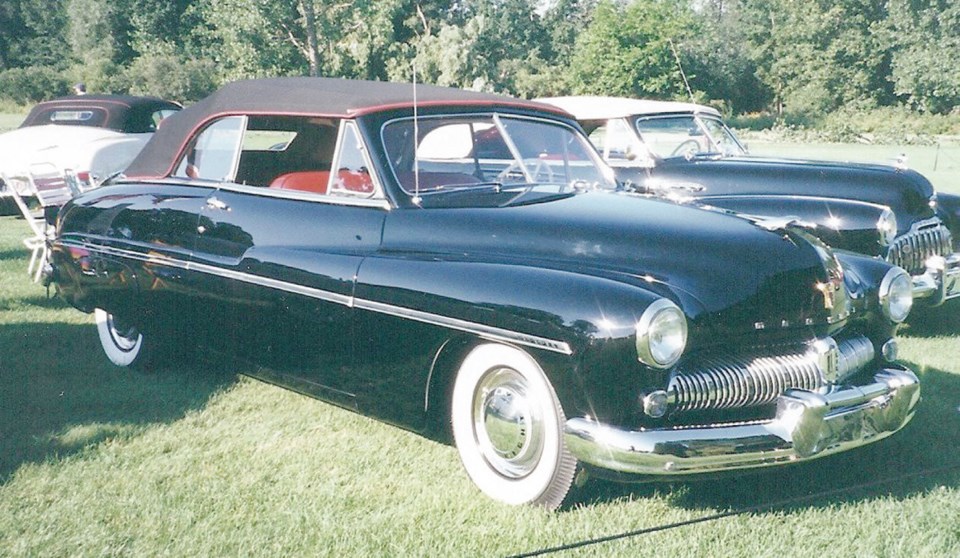For a few years after it was established in 1903, the Ford Motor Co. offered several models. But late in 1908, when Henry Ford introduced what he regarded as the perfect car, the Ford Model T, he discontinued all others and became a one-model company. This continued until 1922, when he bought the failing Lincoln Motor Co. and now had a luxury car at the opposite end of the market from the Model T.
Ford replaced the Model T with the Model A in 1928, and in 1932 introduced its low-cost V-8 engine. But there was still a huge price gap between Ford and Lincoln. Henry Ford’s only son, Edsel Ford, the company president (although Henry still wielded strong influence) recognized the need for better market coverage. In 1936, the Lincoln Zephyr V-12 was introduced at a much lower price than traditional Lincolns.
A more significant move came in 1939, when Ford further closed the gap with the mid-market Mercury to compete with cars such as Buick, Oldsmobile and DeSoto. Although it resembled the Ford and was sometimes referred to as a “Senior Ford,” the Mercury was more deluxe. Its length and wheelbase were greater, and it had a 3.9-litre, 95-horsepower side-valve V-8 vs. the Ford’s 3.6 litres and 90 horsepower.
The new Mercury earned a reputation for performance and economy, but didn’t have long to consolidate its foothold before auto production ceased in the U.S. in 1942 for the Second World War.
When production resumed after the war, Mercury, like others, offered a freshened pre-war design until a new one was developed. But there was a hint of its future direction when Ford formed the new Lincoln-Mercury Division just after the war. The transition was confirmed when the restyled 1949 Mercury looked completely different. It had become a “Junior Lincoln,” even sharing some Lincoln sheet metal.
Mercury retained its Lincoln persona through the 1950s with a big, bold appearance. In 1954, its overhead-valve V-8 arrived, and it reached its modernistic styling peak with the 1957 Turnpike Cruiser, which strongly resembled the 1956 Mercury XK Turnpike Cruiser concept car. The production Turnpike Cruiser had a lowering back window for flow-through ventilation, deeply sculpted fins and antenna pods at the upper corners of the windshield.
The big Mercury continued its luxury persona into the 1960s, but got caught up in the nameplate proliferation that began eroding the well-ordered hierarchy that existed when Fords and Chevrolets were popular-priced cars and Lincolns and Cadillacs catered to luxury buyers. When this breakdown began, Mercury did what Ford, Chevrolet and others had done by adding the compact Comet, a Ford Falcon derivative.
Mercury began offering a variety of models to keep pace with the competition, following Ford’s highly successful Mustang “pony car” with the Mustang-derived Mercury Cougar in 1967. When Pontiac created the big-engined “muscle car” with the 1964 Pontiac GTO, Mercury responded with the S-55, Marauder and Cyclone CJ, a sister car to the Ford Cobra.
In 1970, Mercury began offering something exclusive in the sporty little imported German-built Capri. Although not badged as a Mercury, it was sold by Lincoln-Mercury dealers and was like an imported version of the Ford Mustang II. It came with a four or V-6. In 1971, Ford introduced the subcompact Pinto; Mercury’s version was a Pinto clone called the Bobcat.
Two oil crises in the 1970s brought smaller, more economical “downsized” cars that retained big-car features. Mercury’s was the 1975-80 near-luxury Monarch available with inline six or V-8. Enthusiastic buyers bought 580,000 1978 models, propelling Mercury to its best year ever. For some added pizazz, Mercury also sold the sleek 1971-75 Italian-built De Tomaso Pantera sports car, powered by a Ford 5.7-litre V-8.
As fuel economy concerns deepened, Mercury followed the small-car trend with the front-wheel-drive subcompact Lynx and compact Topaz, Ford Escort and Tempo clones. Midsize Mercurys continued with rear drive until 1986, when the front-drive Ford Taurus/Mercury Sable mid-size models appeared. Their ground-breaking aerodynamics made them a big success.
During the 1980s, Mercury’s offerings usually echoed Ford’s. One exception was the small front-wheel-drive, Mazda-designed Tracer. Another was the Merkur XR4Ti coupe, a version of the European Ford Sierra XR4Ti built in Germany, and its hatchback sedan version, the Scorpio. Merkur had an American four-cylinder and the Scorpio a German V-6. They sold poorly.
By 2008, Mercury sales had slipped to about 100,000 units, and when they fell below that in 2009, Ford decided to discontinue the brand in Canada in 2010 and in the U.S. in 2011. Like Oldsmobile and Plymouth before it, this once-popular nameplate slipped into the past, joining Pontiac, which also left in 2010.



